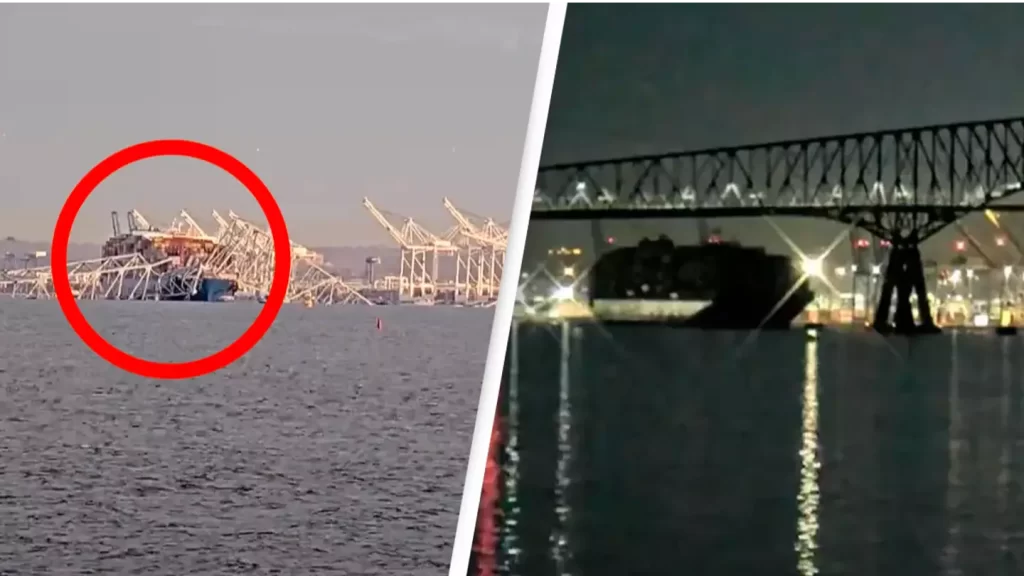Ship that crashed into Baltimore bridge also crashed in port in 2016
In a saga of maritime misfortune, the once again ill-fated Singapore-flagged container ship, Dali, has rekindled past horrors by careening into the Francis Scott Key Bridge in Baltimore. The collision, captured in chilling footage, depicts the vessel’s clash with one of the bridge’s sturdy support struts, triggering a catastrophic collapse of a significant section.

However, this calamitous incident is not the first brush with disaster for the Dali. Cast your memory back to the year 2016, a mere year after its construction, where it found itself entangled in a similar spectacle. Blogs chronicling maritime events surfaced videos revealing the vessel’s ominous presence in the port of Antwerp, Belgium. There, the stern of the colossal container ship could be witnessed scraping against the quayside, leaving scars of potential calamity in its wake.
According to reports from VesselFinder, the 2016 episode was attributed to errors made by the pilot and master aboard the vessel, resulting in a collision that inflicted ‘sufficient damage’ to the Dali’s stern and left the dock in a state of ‘serious disrepair’. Miraculously, no injuries were reported, and the vessel managed to remain afloat, albeit marked by the scars of its misadventure.

Fast forward to the present, emergency services were summoned to the scene of chaos at the Francis Scott Key Bridge shortly after 1:30 am local time. A multi-agency rescue operation, spearheaded by the fire department and in collaboration with the US Coast Guard and various Maryland agencies, is underway, shrouded in uncertainty as the extent of involvement remains ambiguous. The collision, labeled a ‘mass casualty event’ by emergency services, has prompted Baltimore Mayor Brandon M. Scott to declare an official state of emergency, underscoring the gravity of the situation.
As the investigation into this tragic mishap unfolds, questions linger about the sequence of events leading to the vessel’s loss of control and subsequent collision with the bridge, precipitating its devastating collapse. The US Cybersecurity and Infrastructure Security Agency’s revelation that the vessel had signaled the Maryland Department of Transportation about its loss of propulsion adds another layer of intrigue to this maritime mystery.

In the wake of this calamity, the city of Baltimore finds itself grappling with the aftermath, mobilizing resources and orchestrating a concerted effort to mitigate the impact on the community’s safety and well-being. As the saga continues to unfold, an aura of urgency pervades, underscoring the need for swift action and thorough investigation to prevent such tragedies from recurring in the future.


